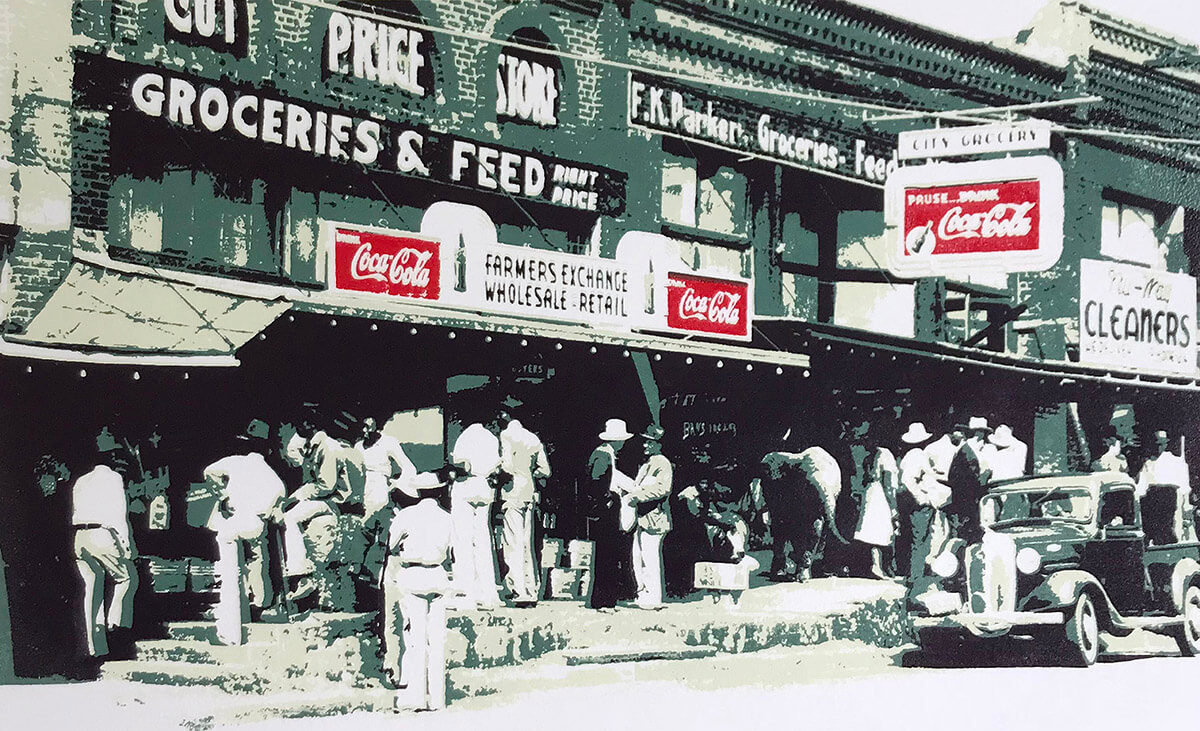Art Traveler
The Art of Concept and Storytelling
The work of S. Christopher James
“I believe that if it were left to artists to choose their own labels, most would choose none” – Ben Shahn
Art is more than technique; it is a vessel for storytelling. When we describe art, we often lean on what we learned in history books—labels, movements, and styles. Western categorizations provide a useful framework, but I’ve never been interested in debating what my work should be called. Instead, I focus on what it says.
Every piece begins with a story. I pull from icons of the 20th century—movies, music, art, technology, and toys—reframing them in ways that resonate with the present moment. The past is not a distant memory; it echoes through today’s struggles, triumphs, and uncertainties. My work captures that connection, using visual language to bridge time.
The Tools That Shape the Story
Like any storyteller, I choose my tools carefully. Traditional mediums like printmaking and watercolor give me the tactile satisfaction of creating by hand—an intimate process that links me to generations of artists before me. But I also embrace digital tools, scanning and refining my work to allow for greater flexibility in execution. This hybrid approach keeps the creative process fluid, ensuring the story takes precedence over the medium.
Beyond Labels: The Art of the Idea
If a label is required, my work is conceptual—but not in the sense of questioning what art is. It is the art of the idea. The medium is secondary to the message. My work remains representational, rooted in formal principles of shape, line, color, and composition. Some may call it illustration, though it is not commercial or commission-based. Others might place it within the realm of Social Realism, particularly when it carries a satirical undercurrent. Whatever the label, my intent is the same: to tell a story that lingers.
A Photograph, a Moment, and an Unspoken Truth
One such story begins with a 1939 photograph taken by Lee Russell (1903–1986, Library of Congress). The black-and-white image captures a street scene in San Augustine, Texas—a gathering of Black and white Americans outside what appears to be a feed store. Farmers, most likely. The surface tells one story: a shared space, an everyday moment. But history tells another.
This was the Jim Crow South. The signs of segregation—colored-only restrooms and water fountains—are absent from the frame but present in the reality of the time. The weight of those unspoken truths lingers. In my serigraph, a single red figure emerges, a deliberate marker of time and place, an icon connecting past to present. It is the elephant in the room—the history we see and the history we know.
The Power of Interpretation
Art with a message is nothing new. Yet its meaning shifts depending on who is looking. If we relate to an artist’s vision, we root for their work, allowing it to stir something in us. For the artist, meaning is both personal and elusive—each piece is a search, never quite reaching perfection, always leading to the next chapter.
I never find myself short on ideas because my subject is as vast as the United States itself. Watching events unfold in real time is both exhilarating and overwhelming. Division, pandemics, wars, climate crises, corporate greed, immigration struggles, political turmoil—none of these are new. They are the fabric of history, woven into every generation. What has changed is our access to them. We see everything now, all at once. But endurance—our ability to carry on—has always been our greatest strength. That is the canvas I work from.
The Joy in Creation
Not every story in art needs to be unraveled like a puzzle. I’d be lying if I said I wasn’t emotionally invested in what I create—like anyone, I’m deeply affected by current events. But beyond the message, the process itself is its own reward. Whether sketching ideas, painting with watercolors, mixing ink for printmaking, or refining a piece digitally, each step is an extension of my engagement with the world. Storytelling through meaningful ideas has the power to connect with viewers, drawing them into a shared experience that transcends the image itself.
photojournalist Lee Russell, 1903-1986
- 1
- 2

